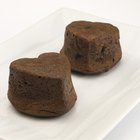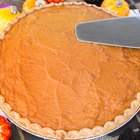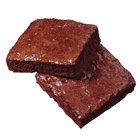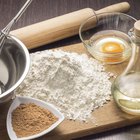
Perhaps the most nerve-wracking part of making a souffle is the timing. If your dinner guests arrive late, they'll miss the souffle's grand entrance because most souffles start deflating about five minutes after you pull them out of the oven. Give yourself a bit more control over the party by making souffles ahead of time and reheating them.
Method
To rebake a souffle, mix and bake it until it's golden brown, and a sharp knife inserted in the middle comes out clean. If you prefer your souffle with a creamy center, remove it from the oven five minutes sooner, but keep in mind the reheated souffle won't rise as much. Allow it to cool on the counter for one hour and cover it with plastic wrap. Refrigerate it for up to three days or pop it in the freezer for up to one month. Allow the souffle to come to room temperature and return it to the oven for eight to 10 minutes, or just until it's heated through.
Results
Considering how seemingly fragile souffles are, you might be surprised at how delicious they taste when reheated. They won't get quite the loft of a fresh souffle, but they will rise admirably. More importantly, they'll still taste moist and light.
Strategies
If you're rebaking a souffle because it didn't rise the first time, you'll probably face more disappointment. The main reasons souffles don't rise have more to do with your prep work than the baking. For a perfectly light souffle every time, start with fresh eggs that have been allowed to come to room temperature. Use an unlined copper bowl or a stainless steel bowl to whisk them, rather than glass or plastic. Wash the bowl with soapy water, rinse and dry well, since even the smallest bit of grease or moisture can reduce the volume of your egg whites. The egg whites should be beaten until they form stiff peaks, then gently folded into the souffle. Don't overdo it. Just fold them in until you can no longer see white streaks. Bake the souffle on the bottom rack of your oven.
Alternatives
Let's say you're about to pop the souffle in the oven when your spouse calls to say he'll be late. Rather than risk a fallen souffle, simply set it aside. Set the filled souffle mold in a warm, draft-free spot, such as near the back of the stove. Cover the souffle mold with a large, empty pot. Protected this way for up to an hour, the souffle won't collapse after you bake it.
Related Articles

What Is a Souffle Dish?

How to Make Bisquick Biscuits

How to Freeze Pavlova

How to Cook Blue Hake

How to Make Pumpkin Pie

Can You Cook Pudding in the Oven?

Can I Prepare Baked Brie Ahead of Time?

Can You Cook Frozen Dinners in Glass?
A Substitute for Meringue

Do You Have to Bake Your Biscuit Dough ...

How to Adjust the Oven Temperature for ...

Tips on Baking Moist Cupcakes From ...

How to Make Mini Tart Shells

How to Replace Yogurt for Butter in ...

How to Make Pumpkin Muffins

How to Stop Cakes From Dropping
Easy Banana Bread Recipe
How to Make a Light, Perfectly Baked ...

What Kind of Pan Do You Need to Bake ...

How Many Calories Are in a Bagel With ...
References
- The Kitchn: 5 Tips to Make a Perfect Souffle Every Time
- BBC: Double-Baked Goats' Cheese Souffles
- Mastering the Art of French Cooking: Julia Child, et al.
Writer Bio
Julie Christensen is a food writer, caterer, and mom-chef. She's the creator of MarmaladeMom.org, dedicated to family fun and delicious food, and released a book titled "More Than Pot Roast: Fast, Fresh Slow Cooker Recipes."
Photo Credits
Jupiterimages/Comstock/Getty Images